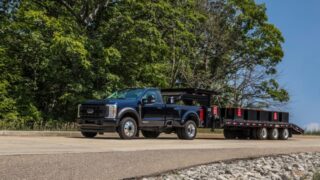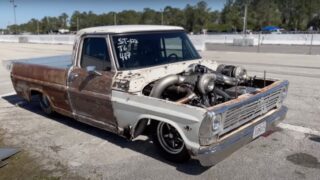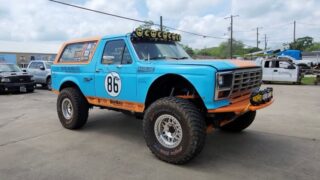Bronco: Building Your Own Dash and Above Dash Instrument Housing




appearance of your vehicle is by removing the old
dash and adding a new customized dash made of T-6 billet. Billet is
tempered aluminum that can be polished to look like chrome, or brushed to look
like stainless steel. Billet is strong, won’t rust, and is readily
available through metal surplus stores and steel supply houses.
thick that had been installed by a previous owner. I bought 1/8"
billet to replace the thinner piece for improved strength. The instruments
had to be relocated to be seen more readily and old switches were replaced with
illuminated rocker switches that took up far less room and were very easy to
locate while driving.

Sawzall. I left a one inch border to act
as a frame for the new billet dash. Removing the ’71 dash enabled me to
modify the dash later without cutting through the steel original dash.
When sawing out the old dash, I used masking tape as a guide to make the cut
more precise and consistent. A one
inch hole saw was used on the upper right hand corner of the old dash and
another one inch hole saw cut in the lower left hand corner. From this
point I was able to run masking tape around the dash to create a border for the
face plate. A Sawzall high speed steel blade was used for this
cutout.
billet, polish the dash to the desired luster using a buffer. If you
attempt to cutout the dash first, you will add a lot of extra work and may
damage the polished area in the process. Now mask off the entire dash to
protect it from damage and to allow you to diagram and make the measurements
necessary for your applications such as switches, CB, and stereo. You will
have to take into account items that will be behind the dash. This will
avoid installation problems later. The masking tape will protect your
polished surface from cutting tools and jigsaws. Its best to use COARSE
CUTTING blades because the finer blades will load up with billet shavings very
quickly.
bolts(1/4" coarse, 1/2" long)to mount the dash to the frame.
These bolts were spaced out every five inches and aligned with the corresponding
upper and lower bolts to improve the symmetric appearance of the finished product. Use holesaw cutters for
round instruments. The early photos of the old dash will show you how
rough it will be to attempt this with any other tool.
finished product that will make your vehicle easier to drive and dramatically
improve the appearance of your
interior.


Watching your trail through the windshield and reading your instruments can
be extremely dangerous. Most racers are placing their gauges where they
can see them while operating their vehicles under demanding conditions when
the driver cannot take their eyes off the road. The Bronco needed this
type of instrumentation so that the operating condition of the engine and
the trail could be observed at the same time. I removed the six small
Autometer gauges and two larger gauges from the dash and decided to build
an enclosed T-6 billet box in which to house these instruments. The dash
would be used for items that did not require constant observation, CB,
AM/FM, A/C and A/C ducts on each side of the steering column and passenger
side of the dash. 1/8" billet was used on the front and rear of the
housing, 1/16" gauge was used for the upper and lower housing. The
speedometer and tachometer are 3.5" in diameter while the water
temperature, volt gauge, ammeter, gas gauge, oil pressure, and vaccuum
gauges are 2" in diameter. Two green LED’s were installed between the
speedometer and tachometer and countersunk into the bezel for left and
right turn signals. A red LED was installed below the turn signals,
midway between the tachometer and speedometer as a high beam indicator.
All allen stainless sockethead screws were used to attach the facing
and rear plate to the upper and lower housing. The back of the housing has
a cutout for the speedometer cable, oil pressure line, and vaccuum lines.
All of the gauge wiring was ported out of the far right side of the
instrument housing and routed into a small section of the air vent. The
speedometer cable was also routed through the air vent. A major
advantage of using this type of instrument housing was the elimination of
wiring under the dash. Also, there is no obstruction of the driver’s view
of the trail. Even when looking right or left through the windshield, the
vital readings are visible through the driver’s peripheral vision.




